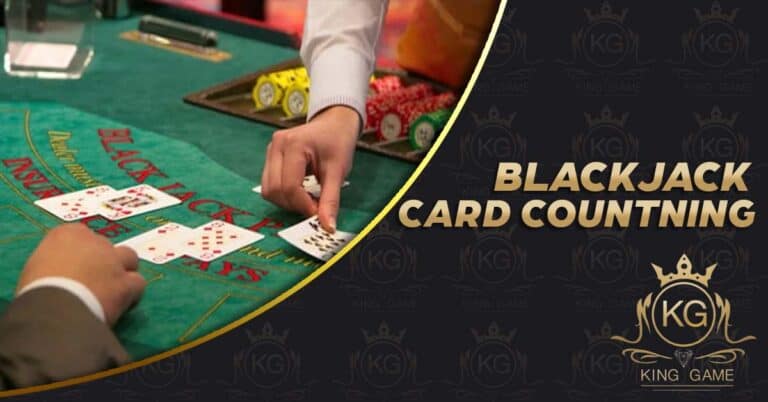Dive into Chinese Poker at KingGame – Where Strategy Meets Thrills!

Chinese Poker, affectionately called “Pusoy,” is a spellbinding card game that skillfully combines elements of strategy and chance. In this exciting game, each player is dealt 13 cards and faces the intriguing challenge of arranging them into three hands: two with five cards each and one with three cards. The ultimate objective? To craft stronger hands than your opponents. With its distinctive rules and captivating gameplay, Chinese Poker delivers an immersive and dynamic gaming experience that resonates with both casual players and seasoned card aficionados.
Unlocking the World of Chinese Poker Rules

Chinese Poker is a captivating card game with a unique rule set that sets it apart from traditional poker variations. Let’s break down the core rules in a way that’s easy to grasp:
Card Hierarchy
In Chinese Poker, a standard 52-card deck is used, with cards ranked from highest to lowest: A, K, Q, J, 10, 9, 8, 7, 6, 5, 4, 3, 2.
Dealing
Each player is dealt 13 face-down cards, which they must arrange into three distinct hands: a backhand of five cards, a middle hand of five cards, and a front hand of three cards. The backhand should be the strongest, followed by the middle hand, and the front hand as the weakest.
Hand Composition
For the back and middle hands, traditional poker hand rankings apply (e.g., pairs, straights, flushes). However, the front hand must consist of three unpaired cards, and flushes and straights do not count.
Scoring
Points are awarded based on comparing your hands with those of your opponents. Points are given for winning individual hands and for overall wins against all opponents. Specific rules govern how points are allocated for wins, ties, and fouls.
Arranging Hands
After arranging their hands, all players reveal them, and comparisons are made with corresponding hands of other players. Points are awarded based on these comparisons in each position (back, middle, front) against opponents.
Royalties
Chinese Poker often includes bonus points, known as royalties. These are granted for specific premium hands, like three-of-a-kind in the front hand or a four-of-a-kind in the backhand. Royalties can have a significant impact on the final score.
Strategic Gameplay
Strategic decision-making plays a pivotal role in Chinese Poker. Balancing the strength of your hands and anticipating your opponents’ moves are key to success. Players must thoughtfully arrange their cards to maximize their chances of winning each hand while considering the overall point distribution.
Winning the Game: Chinese Poker is typically played across multiple rounds, with points accumulating after each round. The player with the highest total points at the end of the agreed-upon number of rounds emerges as the ultimate winner.
So, dive into the world of Chinese Poker with these rules in mind, and enjoy an engaging and rewarding gaming experience!
Becoming a Pro at Hand Strategies: Dominating Chinese Poker with Clever Card Arrangements

In the world of Chinese Poker, crafting formidable hands is the key to success. With three unique hands to assemble – the back, middle, and front – strategy plays a pivotal role. Here’s a closer look at mastering the art of hand strategies:
Prioritizing the Backhand
The backhand holds the fort as the strongest hand, so it deserves special attention. Aim for high-powered combinations like straight flushes, four-of-a-kind, and full houses. Smartly placing your powerhouse cards here can bag you crucial points.
Balance is Key
While beefing up your backhand, don’t sideline the middle and front hands. Distribute your cards wisely to create well-rounded hands that stand a chance at victory. Avoid stacking all your strong cards in the backhand, leaving the other hands vulnerable.
Moderate the Middle Hand
The middle hand doesn’t need to pack as much punch as the backhand, but it shouldn’t be a pushover either. Strive for hands like two pairs, three-of-a-kind, or straights. This hand often contributes valuable points and can be used strategically to block your opponents’ stronger hands.
Handle the Front Hand with Care
The front hand is limited to three cards and typically lacks pairs. Aim for high-ranking cards and steer clear of chasing flushes or straights. Given its status as the weakest hand, your goal here is to minimize potential losses while positioning yourself for overall victory.
Embrace Royalties
Royalties are your ticket to bonus points. Craft your hand arrangements with an eye on potential royalties. Seek opportunities to create premium hands that qualify for these bonuses, such as pairs in the front hand or four-of-a-kind in the backhand.
Read Your Opponents
Keeping a watchful eye on your opponents’ moves is paramount. Try to decipher their strategies based on the cards they reveal in each hand. Adapt your own arrangements to counter their tactics or seize openings that might arise.
Flexibility is Key
As the game unfolds, adaptability is your best friend. Be ready to tweak your strategy as new cards come your way. If you’re lagging in points, consider bolder plays; if you’re leading, concentrate on maintaining your edge.
Balancing Risk and Reward
Assess the potential outcomes of each move. Sometimes, calculated risks, like breaking a strong hand to form an even stronger one, can lead to a wider point margin. But always weigh this against the potential point loss if things don’t pan out as anticipated.
Practice Makes Perfect
Mastering hand strategies in Chinese Poker is a journey that involves practice and experience. Over time, you’ll develop an instinct for which cards to prioritize and how to maximize the potential of each hand.
Never Stop Learning: Chinese Poker’s intricacies allow for endless exploration of strategies. Keep learning from your games and analyze various scenarios. Studying the strategies of other players, both in person and online, can yield valuable insights along the way.
Embrace the Rich Tapestry: Exploring the Intriguing World of Chinese Poker Variations

Chinese Poker’s enduring popularity has given birth to a captivating array of variations, each infusing a unique twist into the beloved classic. Let’s embark on a journey to discover these captivating variations:
Open-Face Chinese Poker (OFC)
OFC offers a thrilling twist, where players start with five face-down cards, gradually drawing and arranging them into three hands. The kicker? These cards are placed face up, revealing your choices to your opponents. Your challenge is to craft formidable hands while strategically guarding against vulnerabilities.
Pineapple OFC: Pineapple OFC shares similarities with its sibling OFC but introduces an extra layer of decision-making. Players receive three cards at a time, but they must discard one before placing the others in their hands. This twist adds complexity and a dash of excitement to the game.
Fantasyland
This bonus round spices up some OFC games. To enter Fantasyland, you must make a pair of queens or better in the front hand. Once there, you receive all your cards face down, allowing you to arrange them in one go, giving you a tantalizing advantage over your opponents.
Progressive OFC
Here, the game adds a dynamic twist by offering escalating point values for specific hand combinations. As the game progresses, stronger backhand hands are rewarded with higher points, encouraging players to aim for increasingly powerful hands.
Turbo OFC
For those seeking an adrenaline rush, Turbo OFC is a faster-paced version. Players receive fewer cards and have less time to make decisions, testing their ability to think on their feet and make rapid strategic choices.
Double-Deck Chinese Poker
In this variation, two decks come into play, accommodating more players and raising the level of complexity. Managing twice the number of cards adds layers of strategy and challenge to the game.
High-Low Split
In this twist, players vie for both the high and low hands, reminiscent of Omaha Hi-Lo. The pot is split between the best high hand and the best low hand, introducing an exciting new dimension to the game.
Royalties Plus
This variation extends the concept of royalties by offering additional bonus points for meeting specific conditions, such as certain hand combinations or achieving particular milestones during the game.
Progressive Pineapple
A fusion of Pineapple OFC and Progressive OFC, this variation melds the mechanics of drawing and discarding with the escalating point system of Progressive OFC, creating a dynamic and engaging gameplay experience.
2-7 Chinese Poker
This intriguing version flips the traditional hand rankings on their head, with the weakest hands emerging as winners. A straight or flush works against you, and the lowest unpaired cards reign supreme.
Embark on your Chinese Poker adventure, and explore these remarkable variations that breathe new life into this timeless card game!
Exploring the Pros and Cons of Chinese Poker: Strategy, Social Bonds, and Challenges

Chinese Poker is more than just a card game; it’s a captivating blend of strategy, skill, and social interaction. Just like any game, it comes with its own good and bad sides. Here’s a balanced look at the pros and cons of immersing yourself in the world of Chinese Poker:
Pros:
- Strategic Depth: Chinese Poker is a thinking person’s game. Arranging your cards into three hands demands careful planning and considering your opponents’ potential moves.
- Creative Expression: Building three distinct hands allows room for creative expression. Players can experiment with different combinations and craft innovative strategies that suit their style.
- Balance of Skill and Luck: Chinese Poker strikes a harmonious balance between skillful decision-making and the luck of the draw. Even if your initial cards seem unfavorable, skilled players can turn the game in their favor.
- Social Interaction: Gathering friends or family around a Chinese Poker table creates moments of social interaction, bonding, and shared experiences that go beyond the game itself.
- Accessible to All Levels: Chinese Poker’s rules are easy to grasp, making it welcoming for newcomers. Yet, mastering its strategic nuances offers a rewarding challenge for experienced players.
- Mindful Decision-Making: Playing Chinese Poker encourages mindfulness. Players need to focus on card arrangement, anticipate their opponents’ moves, and calculate their odds, fostering mental agility.
- Learning Opportunities: Analyzing different hands, strategies, and adapting to evolving games contributes to personal growth as a player. You’re constantly learning and evolving.
- Variety of Variations: Chinese Poker offers a smorgasbord of exciting variations that inject fresh challenges and twists into the classic game, ensuring that gameplay never gets stale.
- Global Popularity: The game’s popularity knows no borders, acting as a bridge for cultural exchange and interaction with players from diverse backgrounds.
- Enhanced Focus and Patience: Waiting for the right cards and making thoughtful decisions under pressure hones your focus and patience, skills that can translate to better decision-making in other aspects of life.
Cons:
- Initial Luck Impact: The luck of your initial card draw can significantly sway the game’s outcome, potentially placing some players at an advantage or disadvantage right from the start.
- Time-Consuming: Chinese Poker games can run longer compared to other card games due to the complexity of arranging three hands. This might not be ideal for quick gaming sessions.
- Complex Strategy: While the rules are accessible, mastering Chinese Poker’s strategic subtleties requires practice and experience. Newcomers may find it challenging to compete against seasoned players.
- Royalties and Variations: The presence of royalties and numerous game variations can occasionally lead to confusion, especially for newcomers trying to remember different bonus conditions.
- Rapidly Changing Dynamics: As new cards are dealt, the game’s dynamics can shift rapidly, necessitating quick strategic adjustments. This adaptability might be challenging for some.
- Skill Gap: Highly skilled players can dominate games, making it tough for less experienced players to find a level playing field in competitive settings.
- Lack of Predictability: The randomness of card distribution can lead to unexpected outcomes, potentially frustrating players who prefer more predictable games.
- Risk of Misplay: A single misplayed hand can significantly impact a player’s overall score, underscoring the importance of maintaining focus and making informed decisions throughout the game.
In the world of Chinese Poker, you’ll discover a thrilling blend of challenge, strategy, and camaraderie, but it’s important to consider these pros and cons as you embark on your gaming journey.
FAQs
Conclusion
In summary, Chinese Poker is a captivating card game that seamlessly blends strategy and social interaction, engaging players in the dual art of creativity and calculation while they strive to outwit opponents for victory. It appeals to both experienced players and newcomers, offering hours of enjoyment and fostering personal growth, mental agility, and shared moments of success among friends and competitors. Although Chinese Poker comes with its challenges, including luck and game variations, the benefits clearly outweigh the drawbacks, making it a rewarding choice for intellectual stimulation, social bonding, and strategic development. Whether you’re honing your skills in live poker tournaments, casual gatherings with friends, or exploring it on platforms like KingGame or any live casino venues, Chinese Poker promises an enriching journey.















